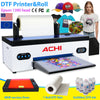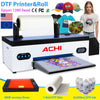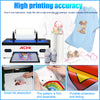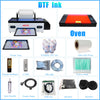Essential Supplies Needed for DTF Printing: A Complete Beginner Checklist for Your ACHI A3 Roll DTF Printer
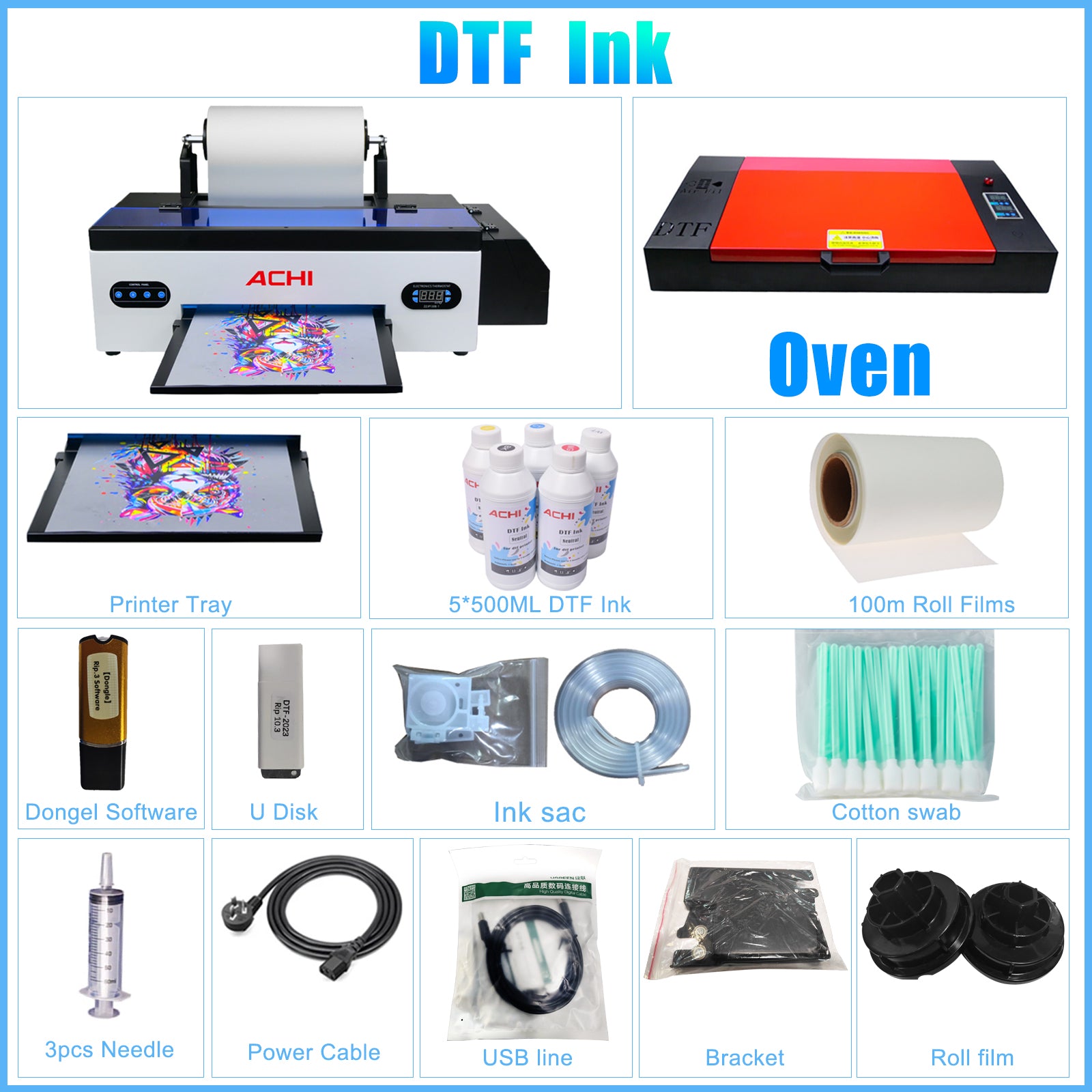
So, you've invested in an ACHI A3 Roll DTF Printer – a fantastic choice for diving into the exciting world of Direct-to-Film printing!
This technology unlocks incredible potential for vibrant, detailed transfers on a vast array of fabrics.
But like any specialized craft, DTF requires the right tools for the job specifically tailored to your printer.
This checklist outlines the essential supplies you absolutely need to get started successfully with your ACHI A3 Roll DTF printer.
Let's ensure you have everything ready for smooth printing and stunning results!
1. The Core: Your ACHI A3 Roll DTF Printer
- What it Does: The heart of your operation. The ACHI A3 Roll printer is engineered for DTF, featuring print heads optimized for white and color DTF inks, precise film handling mechanisms, and typically includes necessary RIP software.
- For ACHI Users: Ensure you have the dedicated ACHI RIP software installed and configured correctly for your printer model. Familiarize yourself with its interface and settings.
2. DTF Transfer Film (PET Film)
- What it Does: This is the printable carrier film. Your design prints directly onto its coated surface. The quality of the film dramatically impacts ink adhesion, powder application, and the final transfer's feel and durability.
- Why it's Essential: It's the literal canvas for your DTF transfers.
- For ACHI Users: Use high-quality PET films compatible with DTF printing. ACHI printers typically work best with films designed for good ink absorption and stability during the printing and powdering process. The A3 size handles roll film efficiently.

3. DTF Inks (CMYK + White)
- What it Does: Specialized pigment-based inks formulated for DTF. The White ink is crucial for opacity on dark garments and forms the base layer. CMYK (Cyan, Magenta, Yellow, Black) inks provide the full-color spectrum. ACHI Genuine inks are highly recommended.
- Why it's Essential: Standard inks won't work. DTF inks are designed to bond with the powder adhesive and withstand the transfer process onto fabric.
- For ACHI Users: This is critical. Use only genuine ACHI DTF inks or inks explicitly certified as compatible with ACHI print heads and the overall DTF system. Using incorrect inks can cause severe clogs, head damage, and poor print results, voiding warranties. The ACHI A3 Roll printer's performance relies on ink chemistry optimized for its components.
4. DTF Hot Melt Powder (Adhesive Powder)
- What it Does: This fine, thermoplastic powder is applied to the wet printed film. After curing with heat, it becomes the adhesive layer that bonds the printed design to the fabric.
- Why it's Essential: It's the "glue" that makes the transfer stick permanently to the garment. Without it, the ink would simply wash off.
- For ACHI Users: Choose a high-quality DTF powder known for low-temperature curing compatibility and producing a soft hand feel. The curing temperature and time should align with recommendations compatible with your printer's output and the fabrics you'll use. Ensure it's suitable for the ink system you have (especially if using ACHI inks).
5. Powder Cure Oven
- What it Does: Applies controlled heat to melt the adhesive powder onto the printed film. This step activates the adhesive and prepares the transfer for pressing onto the garment.
- Why it's Essential: The powder must be melted and cured properly to form an effective adhesive layer. Air drying isn't sufficient.
- For ACHI Users: Dedicated DTF powder melters (conveyor belt or box type) are ideal for consistent results. Heat presses can sometimes suffice for small batches, but ensure the platen is large enough (A3 film!) and you meticulously follow temperature/time/pressure guidelines for powder melting only. Curing powder is different than pressing the transfer.

6. Heat Press
- What it Does: Applies precise heat, pressure, and time to permanently fuse the cured DTF transfer onto the garment.
- Why it's Essential: This final step activates the adhesive bond between the transfer and the fabric.
- For ACHI Users: A quality heat press with accurate temperature control and even pressure across the entire platen is non-negotiable. For handling designs printed on A3 film comfortably, a press with at least a 16" x 16" (or larger, like 16"x20") platen is highly recommended. Ensure it can reliably reach and maintain the required temperature for your specific transfers and fabrics (typically around 320-350°F / 160-177°C).
7. Computer & RIP Software
- What it Does: The computer is used to design and prepare artwork. The Raster Image Processor (RIP) software is the specialized program that drives the ACHI printer, managing color profiles (especially critical for white ink layering), print modes, film feed, and other essential settings.
- Why it's Essential: The RIP is the translator between your design software and the complex requirements of DTF printing on the ACHI.
- For ACHI Users: Your printer almost certainly came with dedicated ACHI RIP software. Learn this software thoroughly. Proper configuration of ink limits, white ink layers, and print modes is crucial for successful printing and preventing ink-related issues.
8. Pre-Treatment Spray (Optional for Problem Fabrics)
- What it Does: Applied lightly to certain fabrics (like polyester blends, performance wear, or coated materials) before applying the transfer. It enhances adhesion and wash durability on challenging substrates.
- Why it May Be Needed: While core cotton and many blends work fine without it, pre-treatment becomes essential for achieving good results on difficult fabrics where standard adhesion might fail.
- For ACHI Users: Have a bottle of quality DTF pre-treatment spray on hand as part of your toolkit, ready for when you encounter fabrics that need that extra adhesion boost.
Ready to Print?
Equipping yourself with these essential supplies, specifically chosen for compatibility and performance with your ACHI A3 Roll DTF Printer, is the foundation for success. Remember, using genuine or certified compatible inks and following recommended procedures for film, powder, and curing temperatures are paramount for achieving professional-quality transfers and protecting your investment in your ACHI printer.

Gather your checklist items, carefully follow your ACHI printer's manual and ink/powder specifications, and start creating amazing DTF transfers!
Happy printing!
-
Posted in
DTF printer
